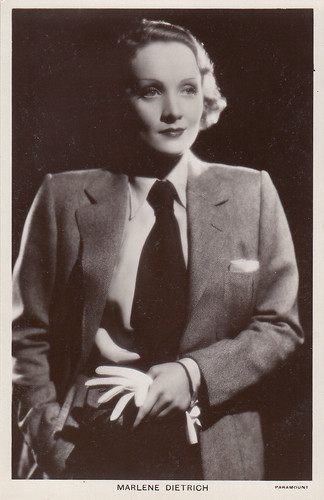
British postcard in the Picturegoer Series, no. 529a. Photo: Paramount. Collection: Marlene Pilaete.
Marlene Dietrich (1901-1992) was the first German actress who became successful in Hollywood. Throughout her long career, she constantly reinvented herself. In 1920s Berlin, she started as a cabaret singer, chorus girl, and film actress. In the 1930s, she became a Hollywood star, then a World War II frontline entertainer, and finally, she was an international stage show performer from the 1950s till the 1970s. Dietrich artfully projected cool sophistication, self-mockery, and infinite experience. Her sexuality was audacious, her wit was insolent and her manner was ageless.
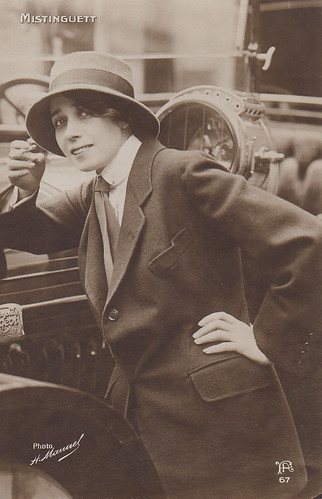
French postcard, no. 67. Photo: H. Manuel. Collection: Marlene Pilaete.
French actress and singer Mistinguett (1875-1956) captivated Paris with her risqué routines. She went on to become the most popular French entertainer of her time and the highest-paid female entertainer in the world. She appeared more than 60 times in the cinema.

French postcard by Editions Chantal, Rueil, no. 5 A.
French singer and actress Yvonne Printemps (1894-1977) was a huge star of the European stage. She also appeared in ten international silent and sound films. A true diva, she loved the spotlight and would be seen draped with jewels, wearing enormous hats, and having her pet dogs on a leash.

German postcard by Ross Verlag, no. 653/6. Photo: May-Film. Mia May in Tragödie der Liebe (Joe May, 1923).
Mia May (1884-1980) was one of the first divas of German cinema. She starred in many films of her husband, producer, writer, and director Joe May.

German postcard by Ross Verlag, no. 1616/1. Photo: Bruckmann-Verleih.
Lee Parry (1901-1977) was a glamorous German film actress of the silent and the early sound era. She often starred in films by her husband Richard Eichberg. She appeared in 48 films between 1919 and 1939.
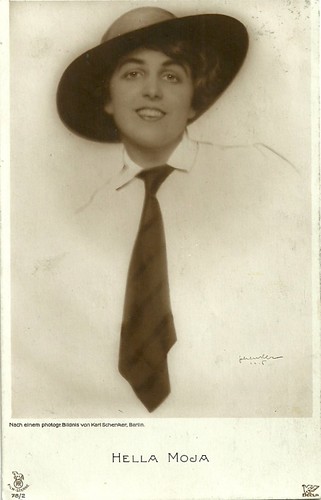
German postcard by Rotophot in the Film Sterne series, no. 78/2. Photo: Karl Schenker, Berlin / Decla Film.
During the First World War and the following years Hella Moja (1890-1951) was one of the most popular stars of the German silent cinema. There was even a Hella Moja serial and in 1918 she founded her own film company.

German postcard by Photochemie, Berlin, no. K. 1812.
Lotte Neumann (1896-1977) was one of the most successful actresses in the early days of German silent cinema. She also worked as a screenwriter and a producer.

French postcard by Editions Cinémagazine, no. 217.
Australian-born actress and producer Violet Hopson (1887–1973) was one of the first British film stars. She appeared in more than 100 British silent films and occasionally played supporting roles in sound pictures of the early 1930s.
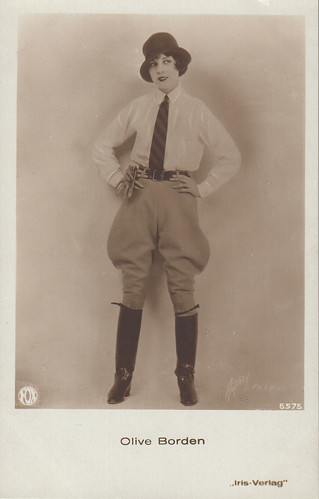
Austrian postcard by Iris Verlag, no. 6575. Photo: Max Munn Autrey / Fox. Collection: Marlene Pilaete.
Stunning Olive Borden (1906-1947) was considered one of the most beautiful actresses of the silent era. At 15, she started as a Mack Sennett bathing beauty and reached the peak of her career in 1926 when she made 11 films for Fox Studios and was earning $1,500 a week. She was nicknamed "the Joy Girl", after playing the lead in the 1927 film of that same title, but soon her career waned.

German postcard by Ross Verlag, no. 48/1. Mady Christians and Willy Fritsch in the Ufa-film Ein Walzertraum (Ludwig Berger, 1925).
Austrian-born stage actress Mady Christians (1892-1951) was a star of the German silent cinema and appeared in Austrian, French, British, and Hollywood films too.

German postcard in the Film-Sterne series by Rotophot, no. 187/1. Photo: Becker & Maass, Berlin.
Carola Toelle (1893-1958) was a German actress, in particular in German silent cinema of the late 1910s and early 1920s.
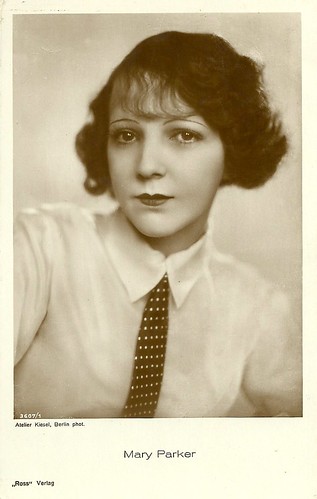
German postcard by Ross Verlag, no. 3607/1. Photo: Atelier Kiesel, Berlin.
Despite her English-sounding name, Mary Parker (1902-?) was a Polish actress who was active in the German cinema of the late silent era.

German postcard by Ross Verlag, no. 1430/1. Photo: Ernst Sandau, Berlin.
Prima ballerina, dancer, singer, and actress Liane Haid (1895-2000) was the first film star of Austria. She was the epitome of the Süßes Wiener Mädel (Sweet Viennese Girl), and from the mid-1910s on she made close to a hundred films.

German postcard by Ross Verlag, no. 1590/3, 1927-1928. Photo: Ufa.
Dignified German-Russian actress Olga Tschechowa (1897-1980) was one of the most popular stars of the silent film era. She remained a mysterious person throughout her life.

German postcard by Verlag Ross, Berlin. Photo: Messter Film, Berlin.
Sturdy and blond Henny Porten (1890-1960) was one of Germany's most important and popular film actresses of the silent cinema. She became the quintessence of German womanhood, ladylike yet kindhearted and a not a little petit bourgeois. She was also the producer of many of her own films.

German postcard by an unknown editor. Photo: Rembrandt.
German actress Ada Svedin (1894-1975) starred in several silent film operettas, produced and directed by Ludwig Czerny, who also became her husband.

German postcard by Ross Verlag, Berlin, no. 359/2, 1919-1924. Photo: Becker & Maass, Berlin / Deutsche Mutoskop & Biograph.
Hilde Wolter (1898-1946) was a German silent film actress, active between 1918 and 1922/23.

German postcard by Ross Verlag, no. 3462/1, 1928-1929. Photo: Kiesel, Berlin.
German film actress Christa Tordy (1904-1945) was discovered while visiting her cousin Mady Christians in Berlin. In the late 1920s, she briefly became a leading star of the German silent cinema before retiring after marrying Harry Liedtke. She was murdered along with her husband by the Soviet Red Army at her home during its invasion of Germany during World War II.

German postcard by Ross Verlag no. 4442/2, 1929-1930. Photo: Atelier Schrecker, Berlin. Collection: Marlene Pilaete.
Ethereally blonde Camilla Horn (1903-1996) was a German dancer and film star. Her breakthrough role was Gretchen in the silent film classic Faust (1926, Friedrich Wilhelm Murnau). She also starred in some Hollywood films of the late 1920s and in a few British and Italian productions.

German postcard by Edition Ross, no. F6. Photo: ACE. Collection: Marlene Pilaete.
French actress and singer Danielle Darrieux (1917-2017) was an enduringly beautiful, international leading lady. From her film debut in 1931 on she progressed from playing pouty teens to worldly sophisticates. In the early 1950s, she starred in three classic films by Max Ophüls, and she played the mother of Catherine Deneuve in five films!

Belgian postcard by Photo Edition, no. 432. Collection: Marlene Pilaete.
American actress Helen Vinson (1907-1999) was a chic, elegant beauty with a tinge of a Southern drawl, who appeared in 40 films between 1932 and 1945. She specialised in the part of the other woman, often taking on the role of the cynical adulteress or the spiteful wife who does her best to prevent her husband's happiness with another woman.
Sources: Financial Times, Wikipedia, and IMDb.
No comments:
Post a Comment